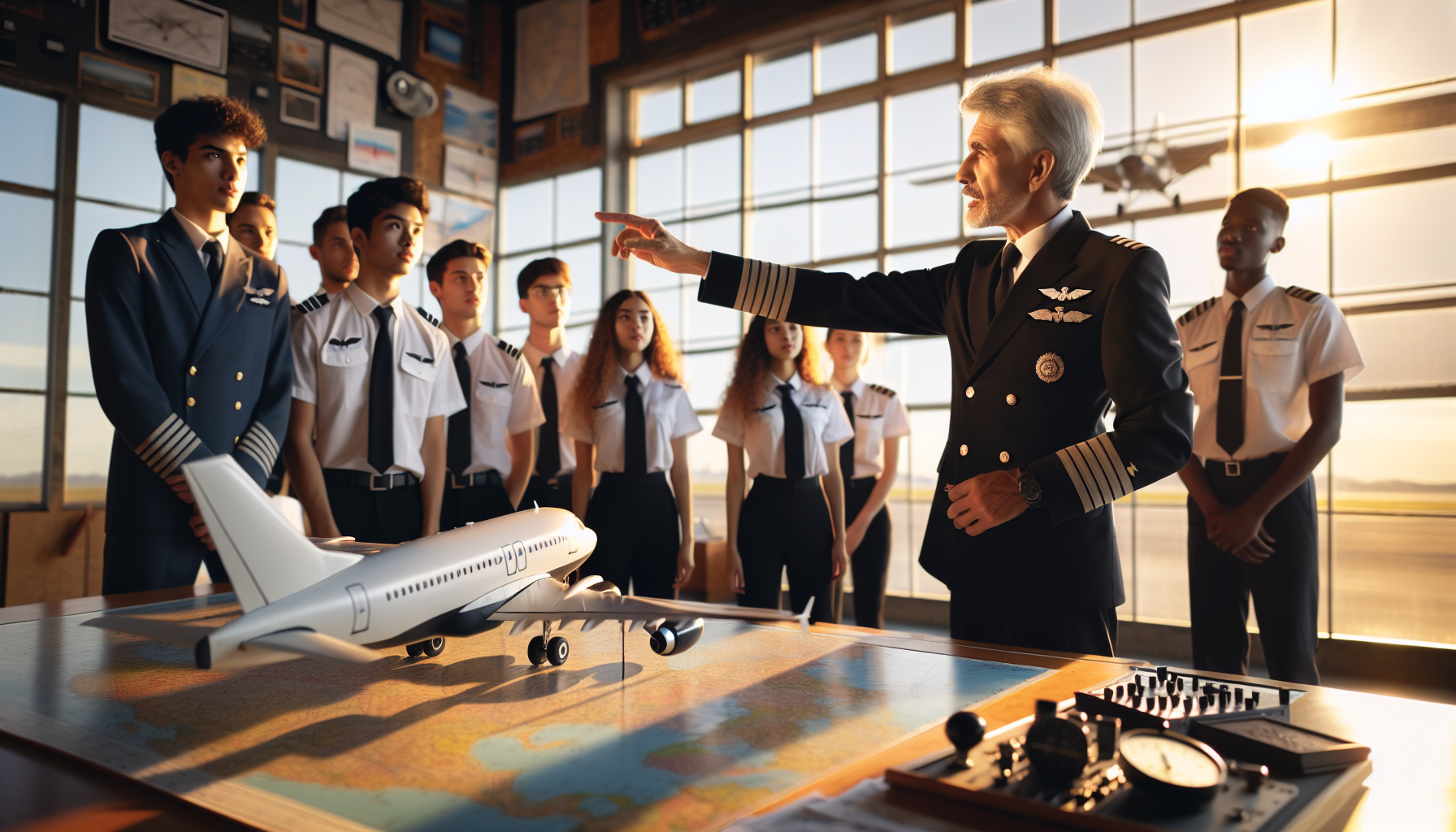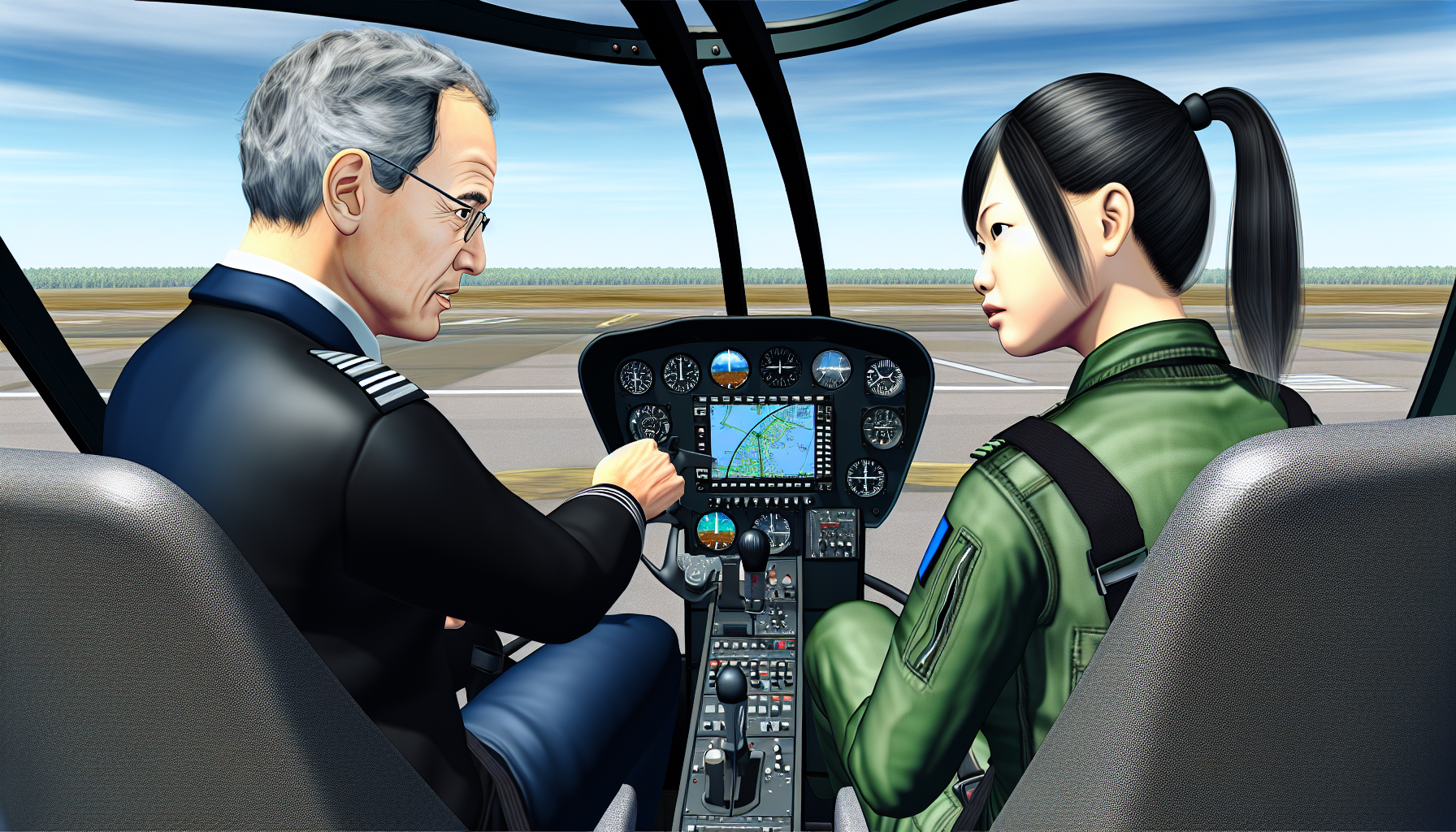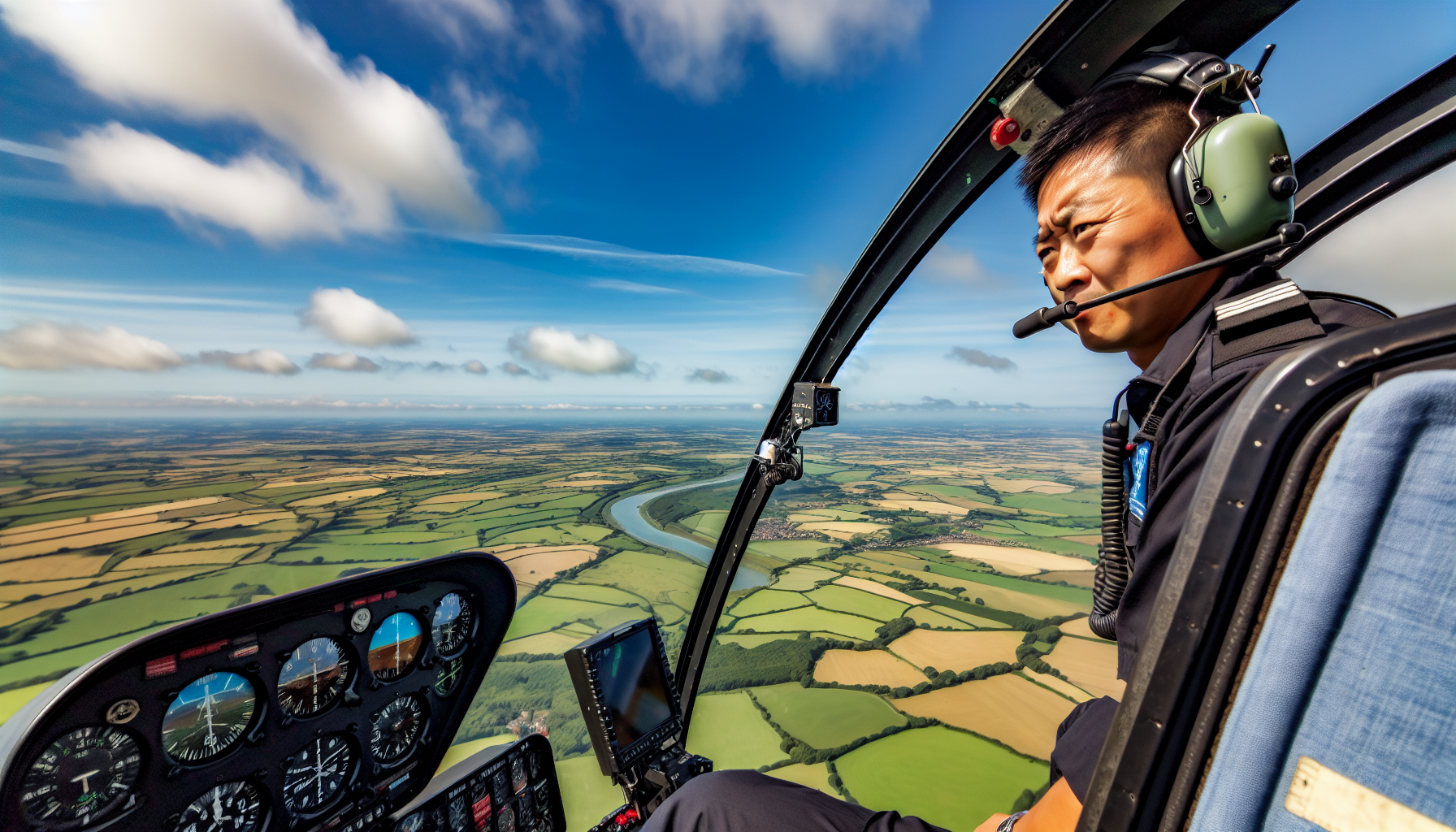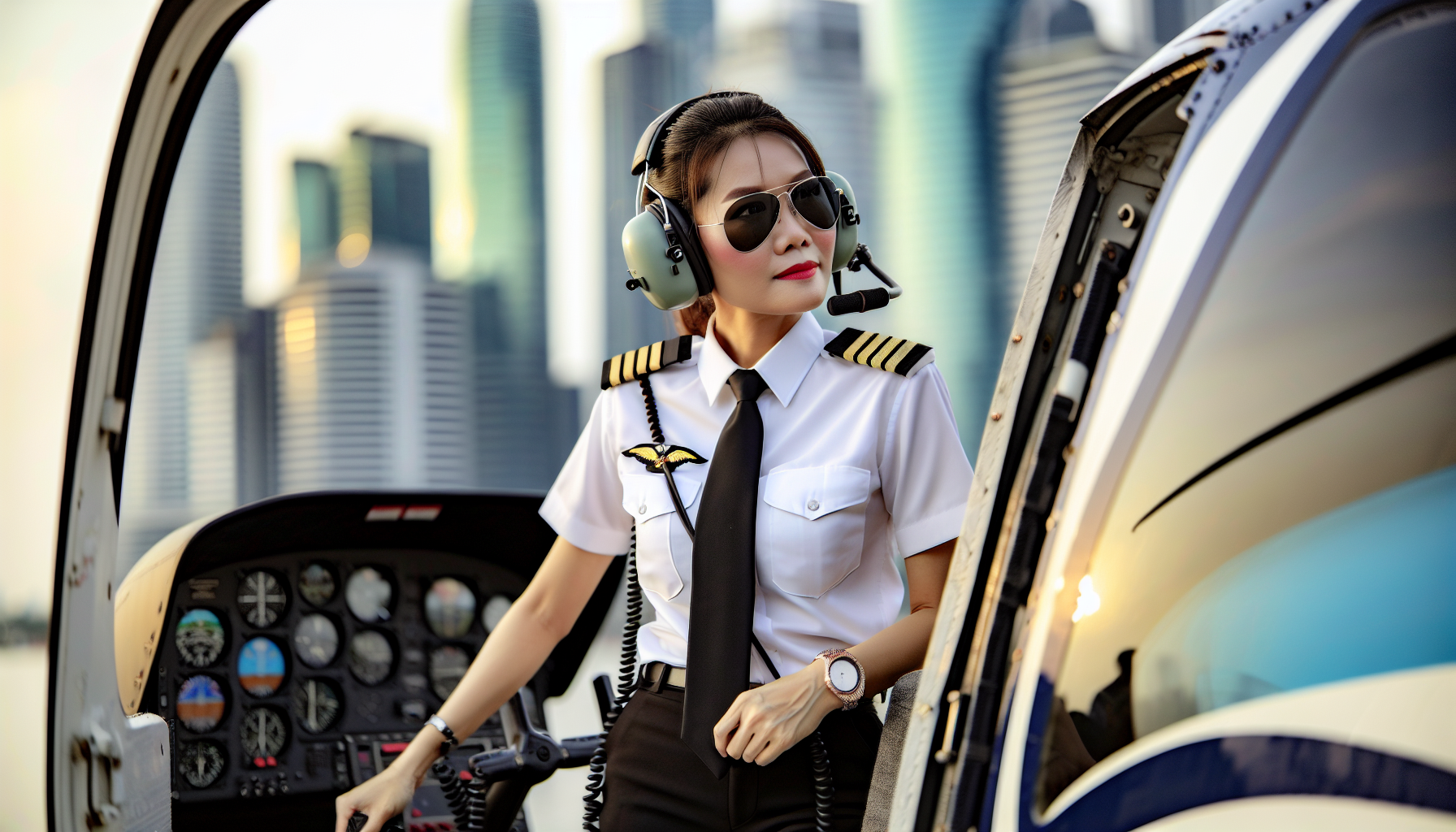Your Path to the Skies: A Concise Guide to Earning Your Helicopter Pilot License
Feb 16, 2024
Ever dreamed of soaring through the sky, the world sprawling below you, as you command a powerful machine with the precision of a dancer? Such is the life of a helicopter pilot, a role that combines thrill, skill, and an ever-present sense of adventure. Whether you’re captivated by the idea of navigating the skies for leisure or you’ve set your sights on a lucrative career in aviation, earning your helicopter pilot license is the first step to turning those dreams into reality.
But, as with any great adventure, the journey to becoming a helicopter pilot requires preparation, dedication, and a deep understanding of the path ahead. That’s where we come in. This guide is your compass, your roadmap, your trusty co-pilot, guiding you through the process of earning your helicopter pilot license. From understanding the licensing process to meeting eligibility requirements, from ground school to flight training, and from exam preparation to career opportunities, we’ll cover it all. So, are you ready to chart your course towards the skies?
Key Takeaways
-
Become a helicopter pilot by obtaining one of three main licenses: the Private Pilot License (PPL), Commercial Pilot License (CPL) or Certified Flight Instructor license.
-
Meet eligibility requirements such as age, medical fitness and language proficiency set by FAA to be eligible for a license.
-
Prepare for exams through studying recommended materials and practice tests. Financing options are available to support cost of licensing.
Helicopter Pilot Licensing: Getting Started

Imagine the cockpit of a helicopter. It’s an intricate array of dials, switches, and controls, each with its purpose, all working in harmony to defy gravity. To master this complexity, you’ll need to earn your helicopter pilot license. But this isn’t just a single license. Instead, there are three main types to consider, each offering different privileges and responsibilities: the Private Pilot License (PPL), the Commercial Pilot License (CPL), and the Certified Flight Instructor (CFI) license. Each license requires fulfilling specific criteria, attending ground school, completing flight training, and passing written and practical exams.
The different licenses for helicopter piloting are:
-
Private Pilot License (PPL): This is the entry point into the world of helicopter piloting and allows you to fly for leisure, but not for commercial purposes.
-
Commercial Pilot License (CPL): The CPL allows you to fly for remuneration, making it essential for those seeking a career as a helicopter pilot.
-
Certified Flight Instructor (CFI) License: The CFI license enables you to instruct others on the art and science of helicopter flight.
Let’s examine each of these licenses in more detail.
Private Pilot License (PPL)
The PPL serves as your passport to the skies. It’s the license that transforms you from an earthbound observer to a commander of the skies, capable of piloting a helicopter for non-commercial purposes. It’s akin to earning your driver’s license but at a whole new altitude!
To apply for a private pilot certificate, you must be at least 16 years old, have the ability to read, speak, and comprehend English, and possess a student, sport, or recreational pilot certificate, along with a third-class medical certificate. Training for a PPL involves a blend of classroom instruction, flight lessons with a certified flight instructor, and solo flight time. The process is demanding and calls for dedication, time, and monetary commitment. Typically, a minimum of 40 hours of flight time is required, including 20 hours with an instructor and 20 hours of solo flight time.
Commercial Pilot License (CPL)
Although flying for leisure has its own rewards, the CPL offers a myriad of other opportunities. It allows you to fly for remuneration or reward, making it the key to a career as a helicopter pilot. Just like the PPL, the CPL has its set of eligibility requirements, including meeting the age criteria, possessing a medical certificate and student pilot certificate, and demonstrating language proficiency.
The flight training for a CPL is even more rigorous, requiring five hours of instrument training, solely by reference to instruments, and a cross-country flight of at least two hours in a helicopter while operating in day Visual Flight Rules (VFR). And, of course, you’ll have to clear the written knowledge test and practical flight test, earning the necessary endorsements and ratings.
Certified Flight Instructor (CFI)
The CFI license is the pinnacle of helicopter piloting credentials. It allows you to pass on your knowledge, skills, and passion to the next generation of helicopter pilots. With a CFI license, you’re not just a pilot; you’re an educator, a mentor, a guide.
Unlike the PPL and the commercial pilot certificate (CPL), the CFI doesn’t require any additional flight experience. Instead, you will prepare for the oral and practical flight test (Check Ride) with an authorized Instructor Pilot (CFI). The two required tests are the Fundamentals of Instruction and General Aviation Information.
Keep in mind, though, that obtaining a CFI rating is an investment, with costs estimated to be between $38,000 and $70,000.
Meeting Eligibility Requirements
So, you’ve decided on the type of license you want to pursue. What’s next? It’s time to ensure you meet the eligibility requirements. These requirements are set by the Federal Aviation Administration (FAA), and they include age, medical fitness, and language proficiency.
Each license has specific age requirements, ranging from 16 years for a Student Pilot License (Solo) to 23 years for an Airline Transport Pilot License. Medical fitness is assessed through an FAA medical certificate, verifying that you are physically and mentally fit to take on the responsibilities of a helicopter pilot. Finally, language proficiency is crucial. Considering that English is the internationally recognized language for aviation communication, proficiency in speaking, writing, and reading English is a requirement.
Age Criteria
Age isn’t just a number when it comes to earning a helicopter pilot license. In fact, it’s one of the key eligibility criteria. The age requirements for helicopter pilot licenses can vary depending on the country and the type of license. Generally, you must be at least 16 years old to start flight training as a student pilot, and 18 years old for commercial licenses.
To be specific, if you’re aiming for a Private Pilot License (PPL), you need to be at least 17 years old. For a Commercial Pilot License (CPL), the minimum age requirement is 18 years. As for becoming a flight instructor, there’s no maximum age for obtaining certification, meaning you can pursue this path at any stage of your life.
Medical Fitness
Flying a helicopter is a demanding task. It requires not just skills and knowledge, but also a certain level of physical and mental fitness. Therefore, medical fitness is a significant eligibility factor for obtaining a helicopter pilot license.
For a Private Pilot License (PPL), you need to have 20/40 vision with or without correction, and meet mental and neurological standards. The requirements for a Commercial Pilot License (CPL) may differ, but generally, you need to obtain and maintain at least a 2nd Class Medical Certificate, demonstrate good physical and mental health, and meet vision and hearing requirements.
To become a Certified Flight Instructor, a third-class medical certificate is required. Remember, regular medical exams are a part of a pilot’s life, ensuring you’re always fit to fly.
Language Proficiency
Communication is key in aviation. This is especially true in the international skies where pilots, air traffic controllers, and ground personnel from various countries need to communicate effectively. Hence, proficiency in English, the officially recognized language for communication in aviation, is a requirement for a helicopter pilot license.
The English Language Proficiency (ELP) test in aviation is a standardized assessment of your proficiency in English and aviation terminology. It’s a mandatory requirement for international operations. But why is language proficiency so crucial? Well, because it ensures clear and accurate communication, which is vital for flight safety. It improves operational efficiency and reduces the risk of errors or misunderstandings that can lead to disastrous outcomes. The language proficiency of potential helicopter pilots is assessed through tests like the International Civil Aviation Organization (ICAO) Language Proficiency Rating Scale.
Ground School: Building Your Knowledge Base

You’ve made up your mind about the type of license, met the eligibility requirements, and are ready to take flight. However, before you can soar into the skies, there’s still more to learn. This is where ground school comes into play. Think of it as the foundation of your helicopter pilot training, where you build your knowledge base and prepare for the written exam.
Ground school covers a wide array of topics, from the intricacies of helicopter aerodynamics to the complex web of aviation laws and regulations. It’s where you’ll learn about weather patterns, navigation, emergency procedures, and so much more. But don’t worry, you’re not alone in this. Numerous resources are available to aid your learning journey, including textbooks, online materials, and mobile apps.
Course Content
Ground school is not just about memorizing facts and figures. It’s about understanding the principles that govern the operation of a helicopter, the rules that regulate the aviation world, and the skills that ensure safe and efficient flight.
The course content in ground school covers a wide range of topics. You’ll learn about:
-
Aerodynamics, including principles of lift, rotor systems, rotorcraft stability and control, and helicopter performance
-
Various emergency procedures, ensuring you’re prepared to handle any situation that might arise in the air
-
Flight controls, learning about the operation and function of the collective, cyclic, and anti-torque pedals
Study Materials and Resources
With so much to learn, where do you start? Fortunately, there are plenty of study materials and resources available to help you navigate through ground school.
Recommended study materials include:
-
Flight Nerd Air Force Briefing Room Squadron
-
FAA handbook
-
Helicopter training videos
-
Helicopter Ground School
-
Textbooks like the Federal Aviation Administration’s “Helicopter Flying Handbook” and “Cyclic & Collective: More Art and Science of Flying Helicopters”
These resources provide comprehensive and easy-to-understand lessons for learning about helicopters.
Flight Training: Gaining Practical Experience

Once you’ve finished ground school, it’s time to put your newfound knowledge into practice and take to the skies. Flight training is where you transition from theory to practice, gaining hands-on experience in operating a helicopter.
Flight training, also known as flight instruction, consists of:
-
Dual instruction – where you fly alongside a certified flight instructor
-
Solo flight time – where you take control of the helicopter all by yourself
-
Cross-country and night flight training – where you learn to navigate long distances and fly in low-light conditions
It’s an exhilarating and transformative experience that takes you one step closer to becoming a certified helicopter pilot.
Dual Instruction
Dual instruction is where your flight training begins. It’s where you, the student pilot, fly alongside a certified flight instructor, learning the ropes of helicopter flying.
During dual instruction, you’ll learn everything from pre-flight checks to shutting down the aircraft. You’ll use flight simulators for regular practice and have briefing/debriefing sessions to discuss your progress and areas for improvement. And while dual instruction is an integral part of flight training, it’s not the end. Once you’ve gained enough confidence and skills, it’s time for you to fly solo!
Solo Flight Time

There’s nothing quite like the thrill of your first solo flight. It’s a milestone in your journey to becoming a helicopter pilot, a moment when all your training and hard work come to fruition.
For a Private Pilot License, you’ll need to clock in 20 hours of solo flight time. Remember, there’s no maximum limit to the number of solo flight hours you can log in a day, but do keep in mind the FAA’s regulations regarding rest periods between flights.
Cross-Country and Night Flight Training
Cross-country and night flight training are essential components of your flight training. They challenge you to apply your skills under different conditions and contexts, making you a more versatile and proficient pilot.
Night time flying requires special skill. It needs a minimum 3 hours of helicopter flying to become proficient at it. Cross-country flight training, on the other hand, requires 3 hours of cross-country flight training and a minimum of 10 hours of cross-country helicopter experience. As for nighttime solo flight experience, you need to clock in five hours, with a minimum of ten take-offs and landings.
Preparing for and Passing the Exams
Once you’ve finished your ground school and flight training, the next step is to evaluate your knowledge and skills. This is where you’ll face the written exam and the practical test, also known as the check ride.
The written exam is designed to assess your knowledge of:
-
helicopter systems
-
aerodynamics
-
navigation
-
meteorology
-
regulations
-
emergency procedures
The check ride, on the other hand, is a practical test that evaluates your flying skills and decision-making abilities in real-time scenarios. Both these exams are critical steps towards earning your helicopter pilot license.
Written Exam Tips
The written exam is a crucial part of your journey to becoming a licensed helicopter pilot. It’s where you’ll need to demonstrate your knowledge of a wide range of topics covered in your ground school.
To ace the written exam, follow these steps:
-
Dedicate at least 1 hour per day for studying.
-
Use the recommended study materials, including the FAA handbook and helicopter training videos.
-
Take advantage of online resources such as Flight Nerd Air Force Briefing Room Squadron.
-
Practice with sample exams to get a feel for the exam format and to identify areas where you might need to focus your study efforts.
Practical Test (Check Ride) Preparation
The check ride is the final hurdle you’ll face in your journey to becoming a licensed helicopter pilot. It’s a practical test that assesses your flying skills, decision-making abilities, and overall flight safety and judgment.
To prepare for the check ride, review the FAA Practical Test Standards (PTS) for the helicopter category. Hone your flying and maneuvering skills, gain an understanding of your helicopter’s systems, and become familiar with airspace regulations and procedures. During the check ride, you’ll need to provide an airworthy certificated aircraft, so make sure you’ve got that sorted out.
And remember, while the check ride might seem intimidating, it’s just another step in your journey to becoming a helicopter pilot.
Financing Your Helicopter Pilot License
Earning a helicopter pilot license is an investment. It requires not just time and dedication, but also a significant financial commitment. The silver lining is that various financing options are available to support your flight training expenses.
The estimated cost of obtaining a helicopter pilot license can vary, but generally, most individuals spend approximately $15,000 over a period of several months for training in a Robinson R22 helicopter. Financial assistance and scholarships are available from several institutions, including the FAA, Associates and Whirly-Girls, and airlines like Envoy Air. You can also explore student loans for flight school, which are available through both government and private lenders. If you’re a veteran, you might be eligible for special financial programs, like the Ray Foundation and the GI Bill, which provide benefits for flight training.
Career Opportunities for Helicopter Pilots

Once you secure your helicopter pilot license, numerous opportunities will open up for you. Whether you choose to fly for leisure or embark on a career in aviation, the sky’s the limit for what you can achieve.
As a helicopter pilot, you can explore a variety of commercial and specialized roles. Some options include:
-
Flight instructor at a flight school
-
Private tour or charter pilot
-
Aerial surveyor
-
Emergency medical services provider
-
Law enforcement support
-
News and media helicopter pilot
All it takes is a commercial helicopter pilot license, also known as a helicopter pilot certificate, and the sky is yours to explore.
Summary
As we’ve navigated through the process of earning a helicopter pilot license, one thing is clear: it’s a journey that demands dedication, discipline, and a deep love for the skies. From understanding the different types of licenses to meeting eligibility requirements, from ground school to flight training, and from exam preparation to exploring career opportunities, every step is a milestone towards achieving your dream of becoming a helicopter pilot.
So, whether you’re passionate about aviation, looking for a thrilling hobby, or aiming for a rewarding career, earning your helicopter pilot license is your passport to a world of possibilities. With the right preparation, determination, and the wind beneath your wings, you can reach for the skies and make your dream of flying a reality. Remember, the sky is not the limit; it’s just the beginning.
Frequently Asked Questions
How long does it take to become helicopter pilot?
Becoming a helicopter pilot typically takes two years if you choose a university flight school. Non-university flight schools offer accelerated courses, and with long hours you could finish in a few months.
Do helicopter pilots make good money?
Helicopter pilots make good money, with an average salary ranging between $62,000 and $128,000 in the US. They typically earn $29-$61 per hour, and can make up to $196,878 in San Jose, CA. In Texas, helicopter pilots make an average of $95,653 a year.
Is it harder to get a helicopter or plane license?
It is a matter of personal preference and career goals as to which license—helicopter or airplane—is harder to get. Both licenses offer their own challenges and rewards, so it ultimately depends on the individual.
What is the minimum age requirement for a Private Pilot License (PPL)?
The minimum age requirement to obtain a Private Pilot License (PPL) is 17 years old.
What are the medical fitness requirements for a Commercial Pilot License (CPL)?
To obtain a Commercial Pilot License, you must be in good physical and mental health, possess a valid 2nd Class Medical Certificate, and meet the vision and hearing requirements.
